Pulsar was a watch brand known for its stylish and affordable timepieces, as well as for introducing the world’s first LED (Light Emitting Diode) digital watch, the Pulsar P1. In this article you’ll learn all there is about this brand and its offerings.
Read: All About Seiko Astron GPS Solar Watches (and Hands-on Review)
#1 – Intruduction to the Pulsar Brand
The 1960s and 1970s are remembered for quick advances in technology, disco, fear of a Soviet/American nuke bomb falling on top of your head and, most importantly, space-race, where exploring and conquering the mysterious and unknown reaches of space was, for then-superpowers, a matter of national security and prestige. The latter was reflected in popular culture – this was the era that spawned many of the sci-fi franchises, such as Star Trek and Star Wars, movies, such as 2001: A Space Odyssey, that I’m sure you’re probably familiar with and a watch company that left a lasting mark on the industry – Pulsar.
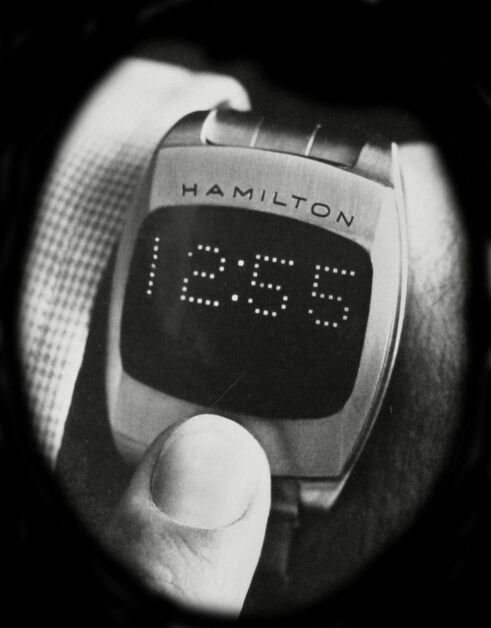
Pulsar’s history began in 1966 when the film director Stanley Kubrick asked the Hamilton Watch Company, a company known for producing the first electric watch and then America’s greatest watch manufacturer, to design clock and wristwatch props of futuristic design for his upcoming movie, the 2001: A Space Odyssey. Although several of them were made, only one, an oval-shaped wristwatch with glowing red digits seen in the picture above, made it to the film.
Despite its status as America’s greatest watch manufacturer, the Hamilton Watch Company was in dire financial situation during that time – they lost a significant share of the market due to intense competition from Japanese and Swiss watch manufacturers and tens of millions of dollars due to several ill-fated acquisitions and failed business-ventures. In order to become solvent once again, they had to create something truly unique and breathtaking…like an oval-shaped wristwatch with glowing red digits from the 2001: A Space Odyssey! And so, in 1969, a joint team composed of engineers John Bergey and Richard Walton from the Hamilton Watch Company, George Thiess and Willy Crabtree from Electro/Data and their assistants, was tasked to, shall we say, bring tomorrow’s technology today.

The fruit of the Hamilton Watch Company and Electro/Data’s joint labor, the Hamilton Pulsar “Time Computer” (named after a pulsar, a rapidly rotating neutron star that blasts out pulses of radiation at regular intervals), was unveiled on the Tonight Show by Johnny Carson (the dude on the right in the picture above) on May 5, 1970. Although Carson wasn’t too impressed with the “time computer” due its estimated price tag of $1500 (he said “The watch will tell you the exact moment you went bankrupt!“), the rest of the country was because the “Time Computer” was something that went from science fiction to reality. Unfortunately, its release had to wait because their light-emitting diode (LED) modules were unreliable, had an annoying tendency to go kaput and were very, VERY power-hungry – according to rumors, a new battery could only last for around an hour or so.
This was bad news for Electro/Data and the Hamilton Watch Company – in 1971, Electro/Data went bankrupt due to some corporate shenanigans and the Hamilton Watch Company, which changed its name to Hamilton Metals Wallace (HMW), had to restructure in order to get back on its feet.
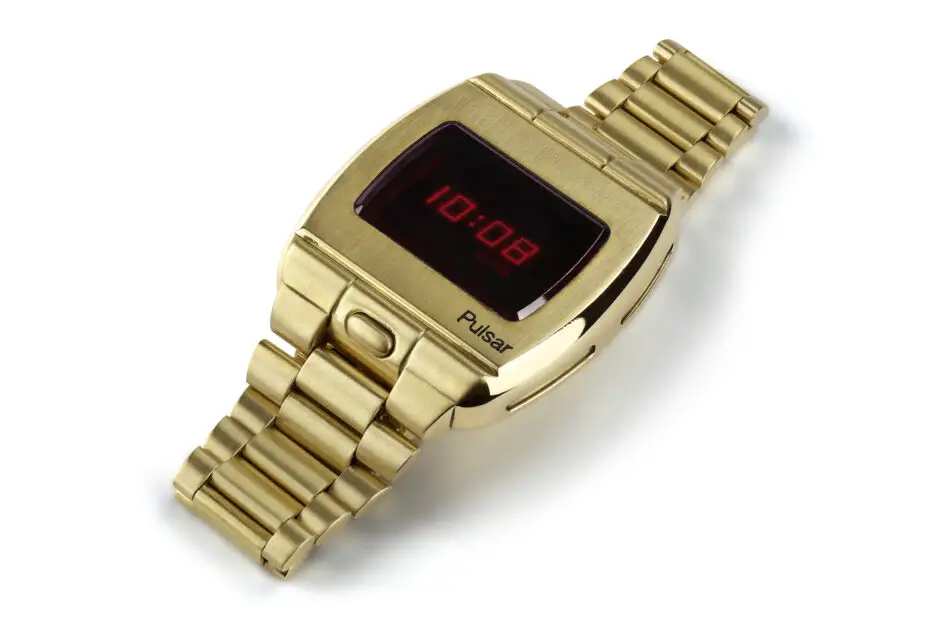
The most important thing that came out after HMW’s restructuring was that the “Electronic Watch Project” (that is, the team who worked on the development of Hamilton Pulsar “Time Computer”) wasn’t terminated – instead, it was separated from its watch division and turned into a subsidiary, TCI (Time Computer, Inc.) headed by John Bergey, whose focus was the further development of a LED watch.
In 1972, after resolving the problems that plagued the Hamilton Pulsar “Time Computer” prototype and further improving the quality of the LED display and module , the Pulsar P1, seen in the picture above, whose case was made from 18k gold, was released. Despite it retailing at $2,100 (as much as a top range sports car or Rolex) it was, like the Seiko Quartz-Astron 35SQ, sold out within days.
As of time of this writing, only around 40 Pulsar P1 (out of 400-450 originally produced) remain – a significant amount of them were melted down during the 1980s and 1990s to recycle the 18k gold their cases and bracelets were made of. Thus, it’s HIGLY unlikely that you’ll ever see (or own) one in real-life.
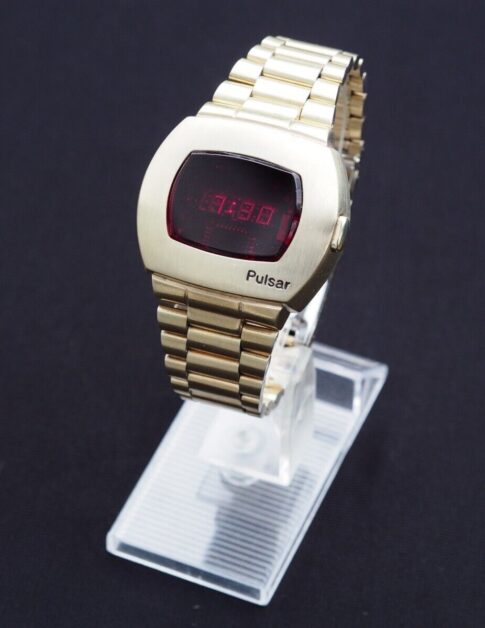
Elvis Presley owned a the Pulsar P1 (and later on, the P2 as well) .
The next model, the Pulsar P2, released in 1973, had a more rounded shape, improved performance and was, due it being made from stainless-steel and mass-produced, around FIVE TIMES cheaper than the P1, retailing at $395 – a price of a small car or entry-level Rolex watch. Despite its still high price, technical issues (the butterfly back would often fall off due to a corroded battery), technological limitations (one had to press a button to turn on the display) and inconvenience (one couldn’t sleep while wearing it because there was a good chance the display would be on all night because the button that turned it on would be constantly pressed), the P2 was a HUGE commercial success – it was worn by James Bond in Live and Let Die (Bond, being a true gentleman, wouldn’t wear just any watch), Elvis Presley, Jack Nicholson, Mohammad Reza Shah and many others. Besides the initial stainless steel version (called “Astronaut”), there were also models with a 14k gold-filled and a 14k gold case (called “V.I.P”) released later on which were, of course, much more expensive.
The Pulsar P2 was the first watch that was imported into Switzerland.
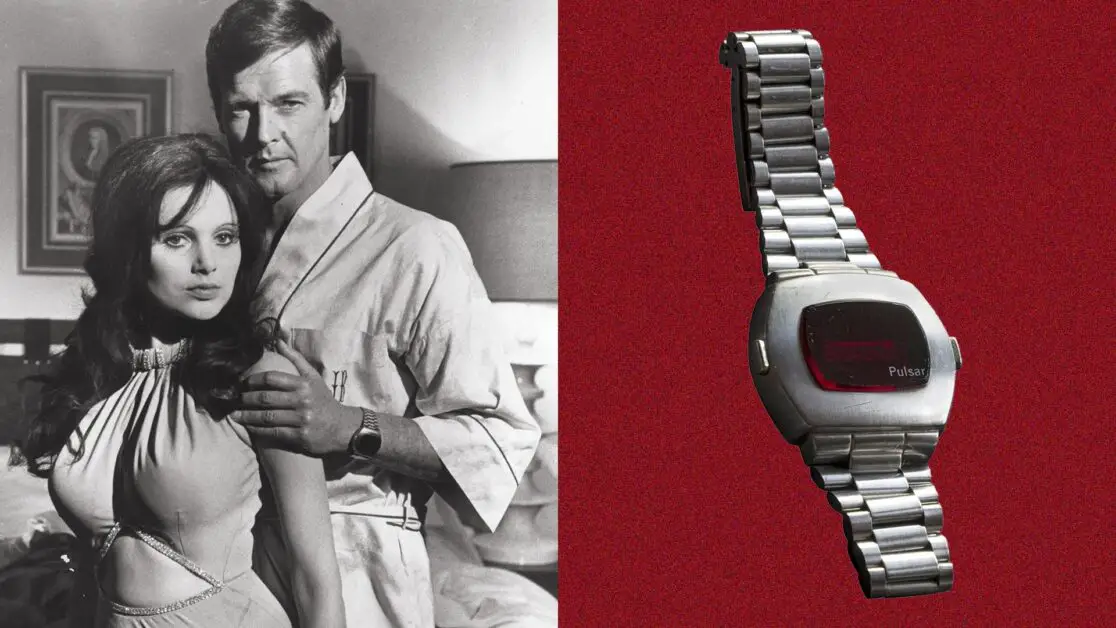
Seeing how popular Pulsar watches were, HMW decided to sell its watch division (or, to be more precise, the Hamilton brand) to the Swiss SSIH (Société Suisse pour l’Industrie Horlogère, which merged with ASUAG in 1983 to form the Swatch Group) as it was far less profitable than its subsidiary, TCI. In the coming years, scores of new lines (like Pulsar P3L and Pulsar P4) and special luxury models with improved reliability, performance and features like “smart calendar” (which adjusts the date automatically for 29, 30 and 31- day months) were released.
Besides LED watches, TCI also produced LED modules and sold them to various companies including to some Swiss one like Omega, which used them to make the iconic TC1 and TC2 watches – the first Swiss (and European) made LED watches.
By 1975 (a mere three years after the release of the Pulsar P2) other companies, like HP, Bulova and Texas Instruments, has entered the LED watch market, driving their prices down. In other to stay one step ahead of them, TCI released the Kraken in fall of that year – the Pulsar Calculator, seen in the picture below. As its name implies, it was a watch AND a calculator in one, whose buttons were so small that required the use of a special stylus (which was, of course, included) to help press them. Although it was more fitting for nerds and people who hated math (like me), the Calculator was an instant hit.
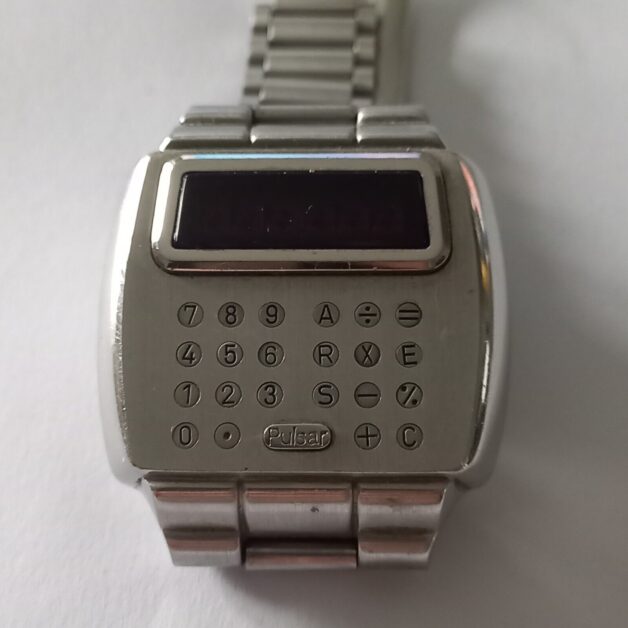
But, the success of the Pulsar Calculator was relatively short lived. When it was released, LED technology…wasn’t as cool as it used to be since it had become widely available to the masses – especially after Texas Instruments released a very affordable line of plastic cased LED watches which retailed for $20 in 1975 and only $10 the following year. That, and the growing popularity of watches with LCD (liquid crystal display ) which consumed MUCH LESS battery power and were more more convenient to use (their display was always on), was the beginning of the end for Pulsar.
Despite TCI fighting tooth and nail to stay relevant by releasing the Pulsar LCD Dress, its first (and only) LCD model (powered by a Ricoh module), it couldn’t stop the inevitable and in July 1977 its parent company, HMW, sold it (together with the Pulsar trademark) to Rhapsody, Inc. after it had begun generating losses, which sold both of them to Seiko of Japan in the following year.
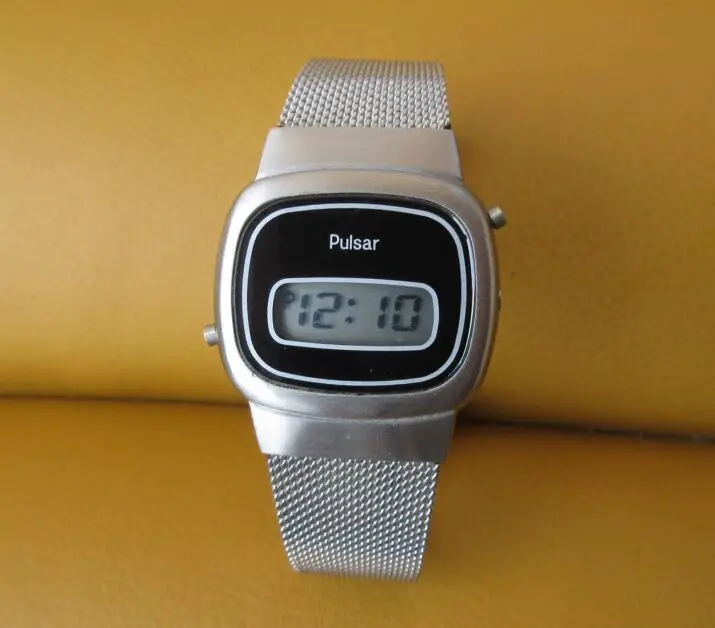
Jean Wuishpard, one of the main watch designers at TCI, passed away in 2006 with one of Pulsar LCD Dress watches on his wrist.
The impressive legacy of early (that is, TCI made) Pulsar models isn’t nowadays carried on by Seiko, but by Hamilton which in 2020, 50 years after the first Pulsar prototype was revealed to the public, released the Hamilton PSR digital quartz line – the modern iteration of the the Pulsar P2 line, seen in the pictures below.
From a technical standpoint, the Hamilton PSR line is miles ahead compared to Pulsar P2’s – its models feature a LCD-OLED hybrid display (which is much practical and cheaper than a LED one) and are powered by quartz movements instead of electric ones. Oh…and they’re made in Switzerland which is something that, to tell you the truth, really surprised me – I expected to see “Cased in China” on their case-backs 🙂 !
The Hamilton PSR line consists, as of time of this writing, of two models – gray (which can be worn even with a suit) and black (which looks awesome when paired with darker clothing – ESPECIALLY when combined with a black leather jacket). Both retail for around $1000 and if, you are into retro or science fiction, this watch is certainly something to consider!
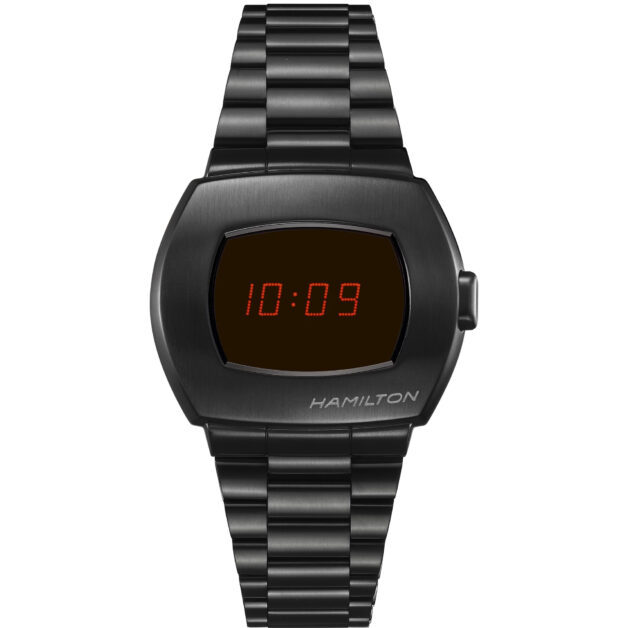
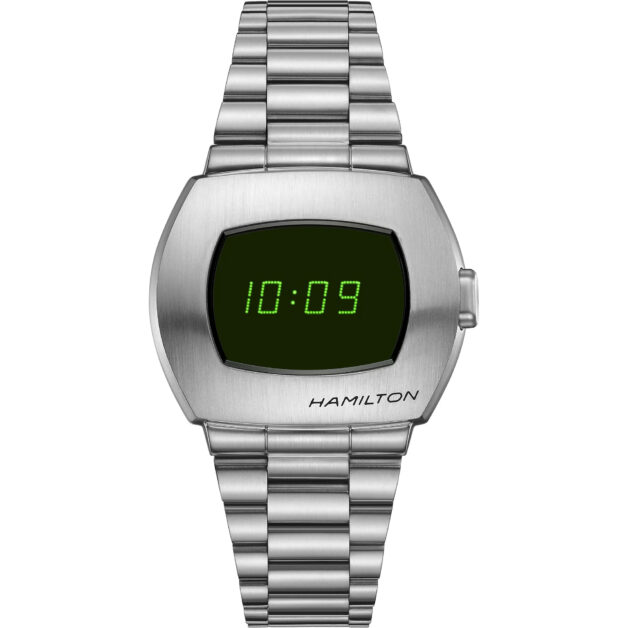
The Hamilton PSR includes several limited-edition models like the Hamilton PSR MTX (which looks identical to the black variant, but with green digits, limited to 1999 pieces) and the Hamilton PSR Gold (a gold-plated version with red digits).
Read: The Best Rolex Submariner Homage Watches to Buy RIGHT NOW
#2 – Types of Pulsar Watches
When Pulsar was taken over by the Seiko Corporation in 1978, its watch offerings expanded SIGNIFICANTLY – besides LCD watches (like the Y739, seen in the lower left picture), it also produced analog-digital (“ana-digi”) and analog watches as well, like the Spoon (seen in the lower right picture) and Avant-garde series, of very unique, space inspired stylish designs (the Spoon looks like an astronaut’s head). All of them (bar some exceptions, of course) were very dependable, affordable and, due to their designs, quirky – during the 1980s and early 1990s, they were a must-have for any fashionista, nerd or someone who just wanted to be different. So…if you belong to any of those categories and are looking for an affordable watch, Pulsar models from that era are certainly worth of your consideration – there’re plenty of vintage and NOS (New Old Stock) Pulsars on sites like Chrono24, eBay and Etsy, where most of them are priced well under $100.
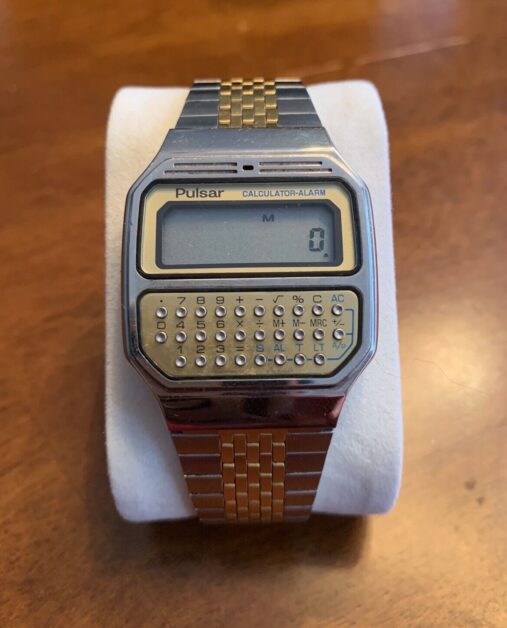
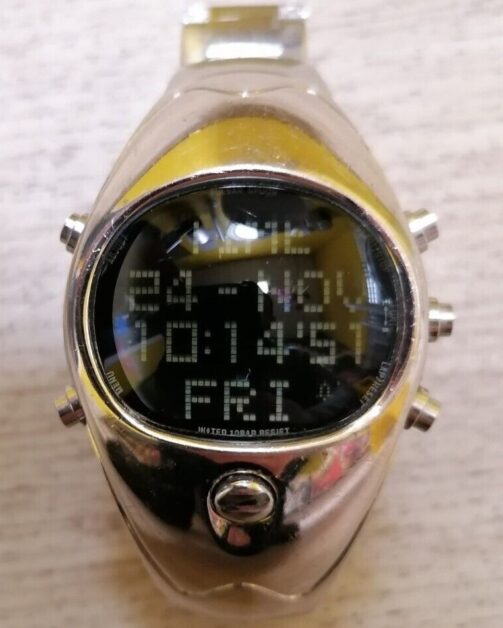
Things changed in the following decades, however – from the mid 90s, Pulsar more-less stopped producing LCD watches (Casio, Timex and various Hong-Kong and Chinese companies had, along with Citizen, squeezed them out of that market) and changed its niche completely – it no longer produced watches that pushed the boundaries of creativity or embodied human’s desire to explore the deep reaches of space, but mostly toned-down versions of more expensive Seiko models (there were, of course, exceptions like the very space-agey Pulsar PT3919X seen in the picture below). In short, Pulsar stopped being Seiko’s “trendy” line and become, alongside Lorus, more of an entry-level line.
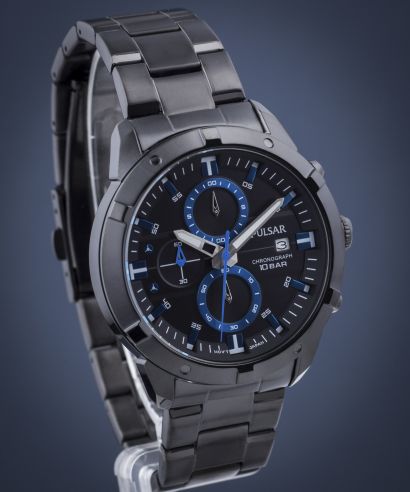
Pulsar offers a wide variety of chronographs (like the aforementioned Pulsar PT3919X ), field, dress and dive (some with a 200m /20 ATM water resistance) watches for both men and women. Although there’re some models that have kinetic (like the Pulsar PAR147 seen in the picture below) and solar-powered quartz movements, the vast majority are powered by various entry-level Hattori quartz movements that’re used in Lorus and entry-level Seiko mainline models as well. In a highly unlikely event they ever go bye-bye ( you never know 🙂 ), you’ll have no problem finding a replacement!
Pulsar also has a rather small selection of LCD digital watches as well, like the PQ2015.
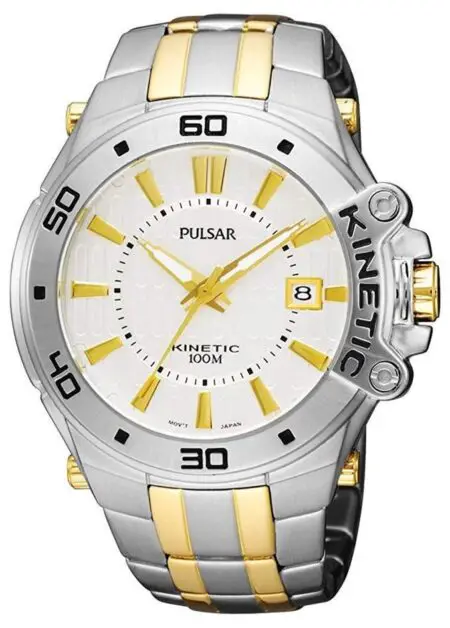
In Ernest Hemingway’s novel, The Sun Also Rises, in one conversation an interlocuter questions another on how he went bankrupt, resulting in the now well-known response: “Two ways. Gradually, then suddenly.” Something similar happened to Pulsar – when it became Seiko’s entry-level line, it competed not only with other brands from that niche like Casio, Timex, Fossil but also with Lorus (another Seiko’s entry-level line) and Seiko itself. Because of this, it made no sense for the Seiko Watch Corporation to keep the Pulsar line alive and it, starting in 2020, gradually began to reduce its international presence. A few years later, in 2023, Pulsar, as the narrator from A.I. Artificial Intelligence describes, went to a place “where dreams are born” – or, to be more precise, merged with Alba, Seiko’s entry line that was originally marketed only in Asia and Australia.
Whether Pulsar will ever return to the waking world is up to the Seiko Watch Corporation.

Read: The BEST Women’s Dress Watches Under $100 (and SLIGHTLY over) You Can Buy
#4 – Frequently Asked Questions
Where are Pulsar Watches Made?
Pulsar watches are made in the US, Japan, China, Malaysia and Singapore.
Pulsar watches, while TCI was a Hamilton Watch Company/Hamilton Metals Wallace subsidiary, were made in the US in a variety of locations.
After Seiko bought TCI, the production of Pulsar watches moved to Japan and to China. Malaysia and Singapore later on.

Read: Where are Seiko Watches Made?
Are Pulsar Watches Good?
Yes, Pulsar watches are considered be of good quality. Many watch enthusiasts believe that they are some of the best entry-level watches one can get – whilst cheap, they are of good quality and are, like all things Seiko, very dependable.

Read: THE BEST Women’s Dive Watches Under $100 (and SLIGHTLY over) you Can Buy in 2023
Are Pulsar Watches Expensive?
No, Pulsar watches aren’t expensive – their retail prices are (well…were) usually well below $300. But…don’t let that fool you – despite being slightly lower quality than Seiko’s, they are still pretty good and, if taken care of properly, won’t let you down.

Are Pulsar Watches Waterproof?
Yes, most Pulsar watches are waterproof.
From what I’ve seen, most models have a 100m (10 ATM) water resistance, making them suitable for swimming and snorkeling but bit diving.
As far as water resistance of Pulsar divers is concerned, their most expensive models have a 200m (20ATM) water resistance, making them suitable for diving.

Are Pulsar Watches Still Made?
No, Pulsar watches are no longer made.
In February 2023, Seiko decided to merge Pulsar with Alba, Seiko’s entry-level line of watches which were originally sold only in Asia. To tell you the truth…a brand with a rich history like Pulsar didn’t deserve such a fate and we can only hope that Swatch (which owns Hamilton) will buy the brand and revive it!

Read: THE BEST Men’s Dive Watches Under $100 (And Slightly Over) you Can Buy
Are Pulsar Watches Made by Seiko?
Yes, all Pulsar watches are made by Seiko, in the same factories where more expensive watches were made.

Read: The BEST Men’s Dress Watches Under $100 (And Slightly Over) to Buy RIGHT NOW
Are Pulsar Watches Valuable?
No, Pulsar watches aren’t valuable generally speaking. The only exceptions are some limited edition models and LED watches that were made before the brand was acquired by Seiko.
For example, Pulsar P2’s made from stainless steel (and with original parts) usually cost around several thousand dollars IF they are in working condition and decent shape (they’ll cost much more if they come with original box), while those that are for parts cost around several hundred dollars. Models that’re gold plated or made from gold cost tens of thousands of dollars even if they aren’t in working condition.
I can’t even imagine how much a Pulsar P1 costs – probably around a million dollars.

Are Pulsar Watches Faked?
From what I’ve seen, Pulsar watches aren’t faked. And never were, since this brand was cheap and wasn’t as popular as Rolex or Seiko.

Thank you for reading. If you’ve liked this article and want to see more like them, make sure you bookmark this site and to follow me on Instagram!
Until next time.
Your man,
-Leon

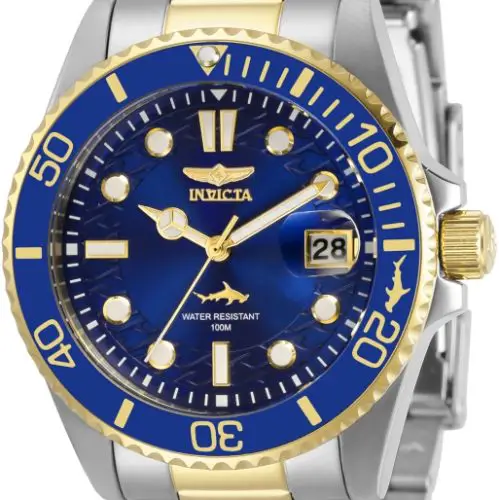

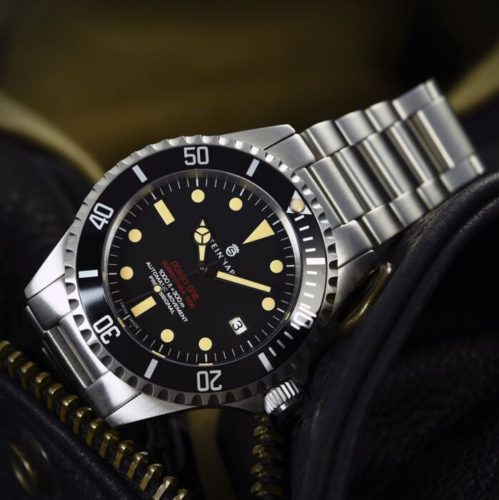

Pingback: The Best Rolex Submariner Homage Watches to Buy RIGHT NOW – Findnolimits
Pingback: THE BEST Men’s Dive Watches Under $100 (And Slightly Over) you Can Buy – Findnolimits